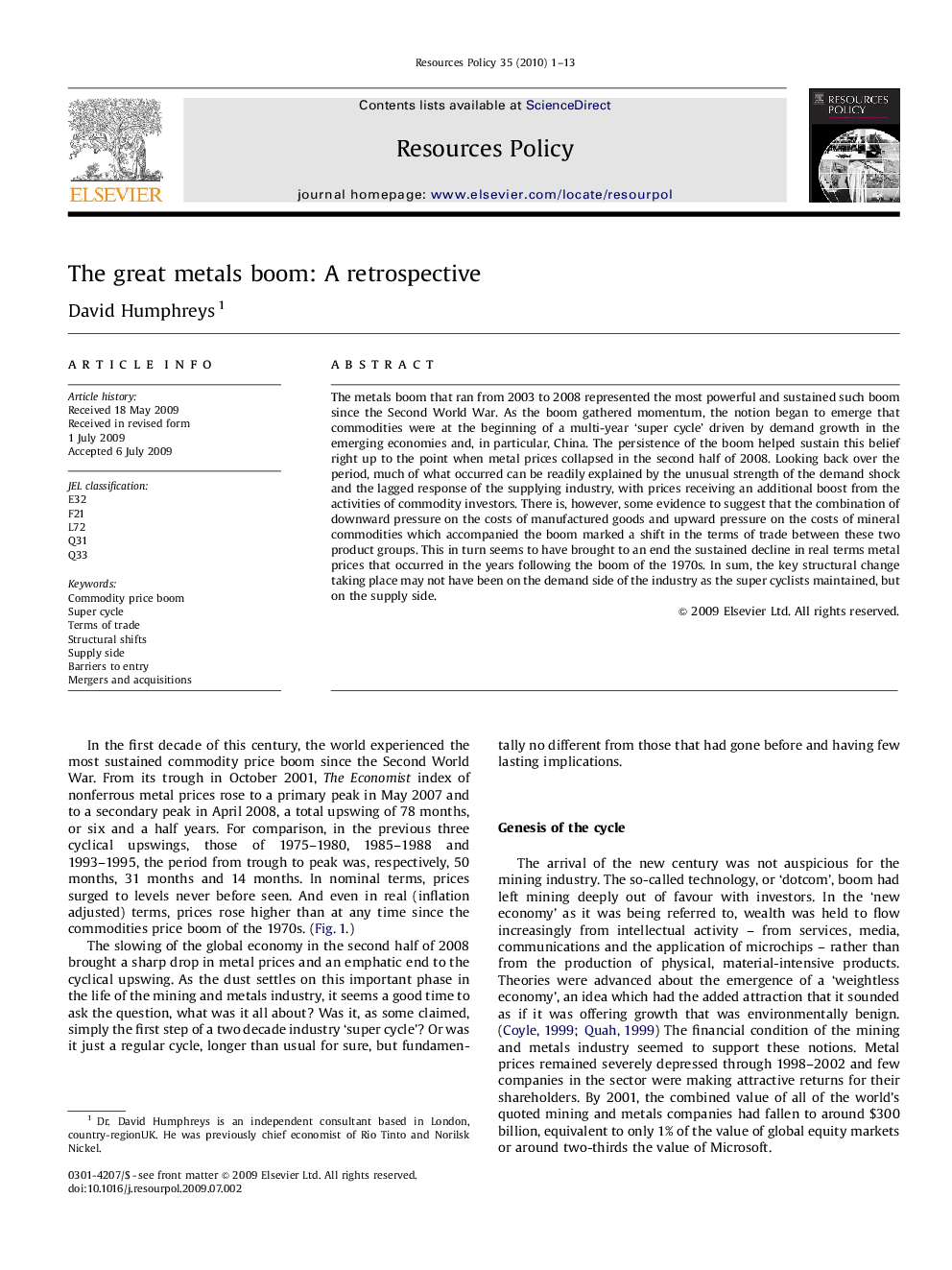| Article ID | Journal | Published Year | Pages | File Type |
|---|---|---|---|---|
| 986391 | Resources Policy | 2010 | 13 Pages |
The metals boom that ran from 2003 to 2008 represented the most powerful and sustained such boom since the Second World War. As the boom gathered momentum, the notion began to emerge that commodities were at the beginning of a multi-year ‘super cycle’ driven by demand growth in the emerging economies and, in particular, China. The persistence of the boom helped sustain this belief right up to the point when metal prices collapsed in the second half of 2008. Looking back over the period, much of what occurred can be readily explained by the unusual strength of the demand shock and the lagged response of the supplying industry, with prices receiving an additional boost from the activities of commodity investors. There is, however, some evidence to suggest that the combination of downward pressure on the costs of manufactured goods and upward pressure on the costs of mineral commodities which accompanied the boom marked a shift in the terms of trade between these two product groups. This in turn seems to have brought to an end the sustained decline in real terms metal prices that occurred in the years following the boom of the 1970s. In sum, the key structural change taking place may not have been on the demand side of the industry as the super cyclists maintained, but on the supply side.
